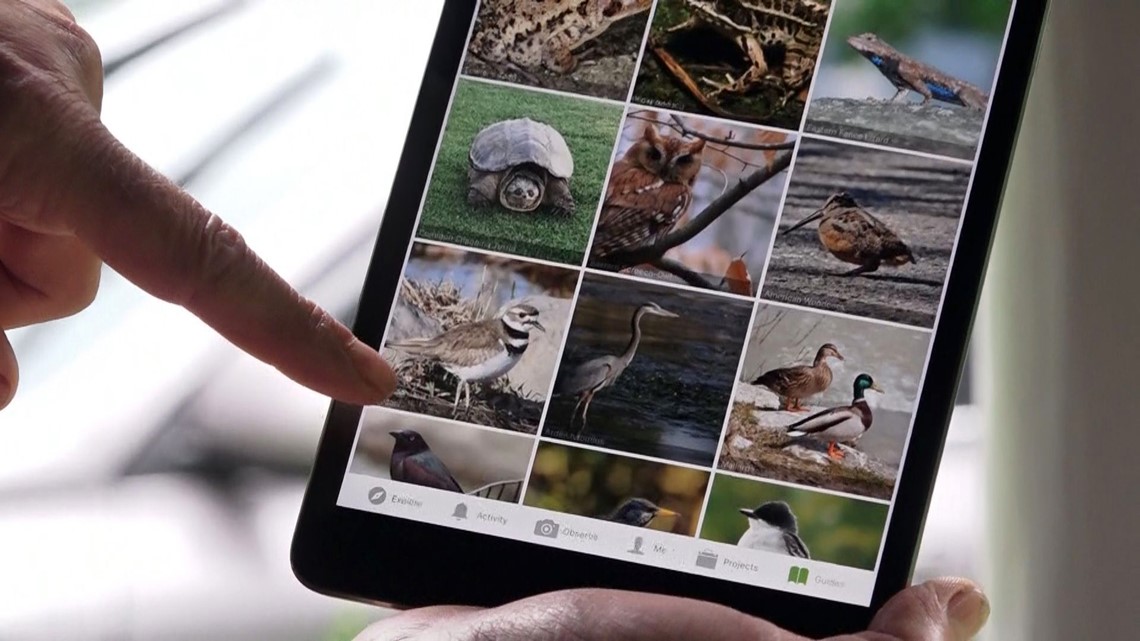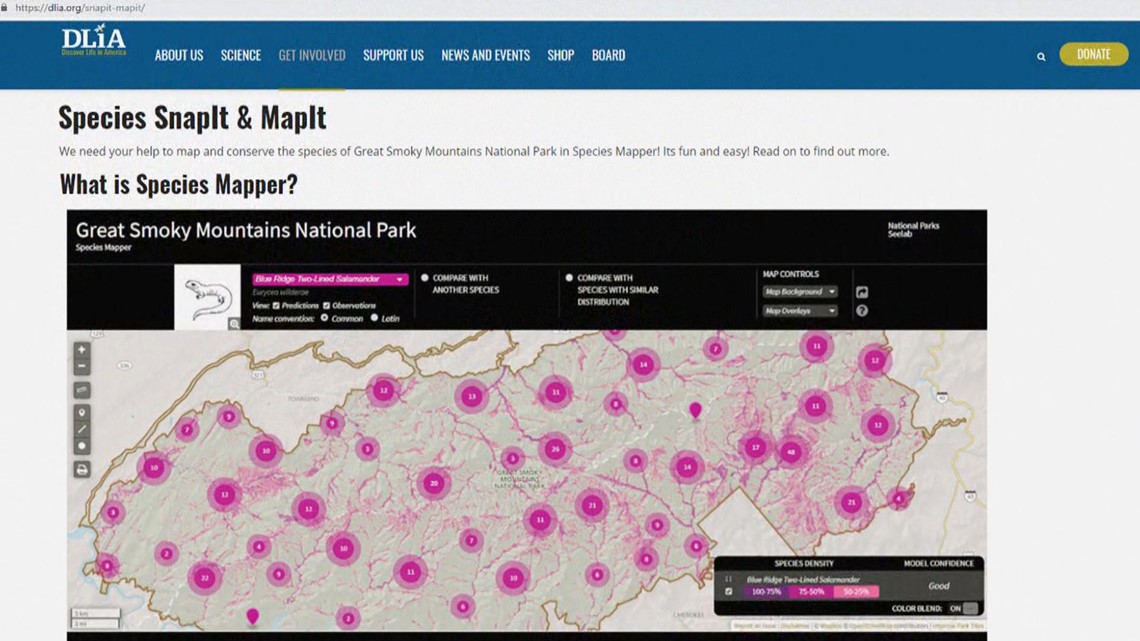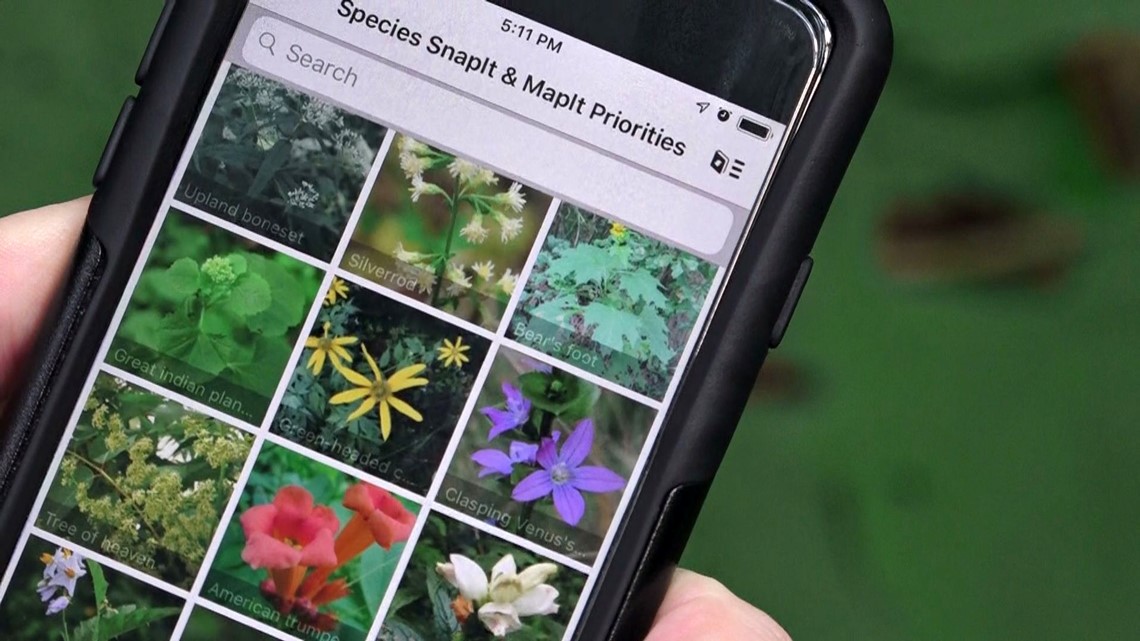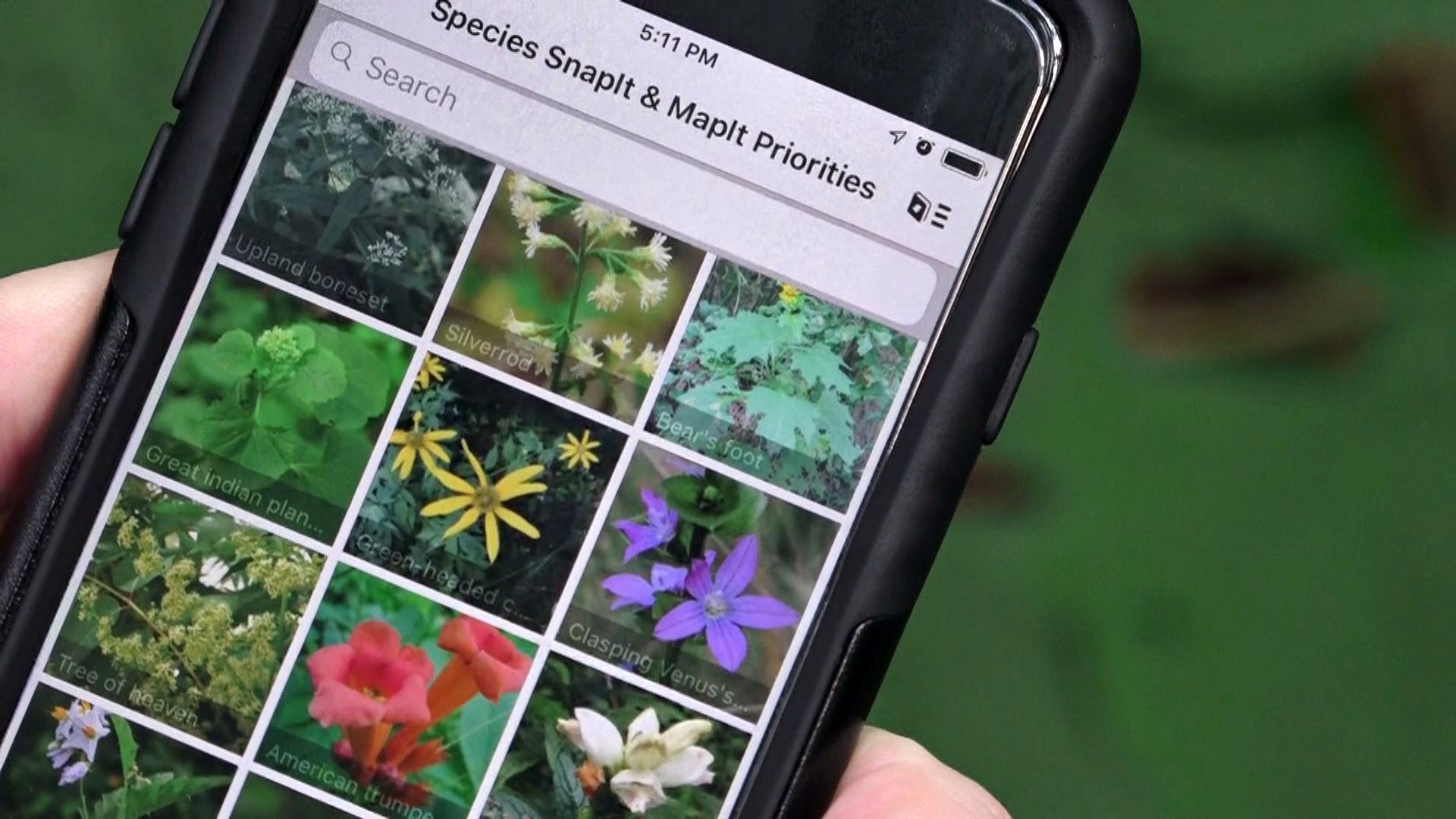GATLINBURG, Tenn. — Do you visit the Great Smoky Mountains? Do you take pictures with your phone? That's all you need to be a citizen-scientist who helps with a massive research project to document the plants and animals found in the Smokies.
The non-profit group Discover Life in America (DLiA) is based in the Smokies and has been working for years to take an inventory of all the species that live in the park.
Advances in smartphones mean millions of visitors can form a volunteer army that gathers scientific data by doing what comes naturally: go to the park and take pictures of interesting plants and animals.


"We want people to 'snap it and map it.' I think that's the great thing about it. Most people are already taking pictures. By using the free iNaturalist app to take pictures, people can help us get data that would a researcher forever to collect on their own," said Todd Witcher, director of Discover Life in America. "We have been working for years now to catalog all the species in the park for a project called the All Taxa Biodiversity Inventory, ATBI for short. Now we can have 11 million visitors to the park help with their phones."
Even without cell service, most phones are equipped with an offline GPS that allows the iNaturalist app to store the location where a photo was taken. This lets researchers map exactly where species live and subsequently predict where else they can be found in the park.
"You download a free app called iNaturalist. You open the app and join our project in the app. You take pictures of plants and animals. It's easy," said Witcher. "We need to document each species at least 30 times to create a good map. It can be wildflowers, insects, salamanders, birds, bears, anything interesting."


Even if you don't know what a specific species is, the app's artificial intelligence can look at the photo and identify it. The same way people use the Shazam app to identify music, the iNaturalist app and its members help determine what species of plant or animal you've photographed.
The iNaturalist app includes a guide for the plants and animals that top researchers' wish list for the SnapIt & MapIt research.
"If you find these particular species in the guide, great. But all data is good. Submit anything interesting, even if it is not on the guide listed as a priority," said Witcher. "People should care about this project because it helps the park. It helps scientists do better research. It helps us understand how everything is connected."
Here's how you can help with the SnapIt & MapIt effort in the Smokies:
- Download the free iNaturalist app on your smartphone or tablet.
- Create your username and password on your device or at iNaturalist.org.
- In the app, click ...More, then Projects, then click the magnifying glass to search for "Discover Life In America ATBI" and join the project.
- Get the guide for the most wanted species by going to ...More, then Guides, then search for "Species SnapIt & MapIt Priorities."
- You can download the species priority guide to your phone to have access to it without cell service.
- Take a hike. Take photos. Submit your observations using the iNaturalist app or your computer's web browser.
Even if you don't use a smartphone, many modern digital cameras have GPS capabilities. You can submit these pictures from your computer to assist the research.


"There are more than 20,000 species in the Great Smoky Mountains. We have discovered more than 1,000 new species right here in the park that had never been documented anywhere else in the world. This could be something where we find even more new species," said Witcher.
See the links below for more information on the research and how to help:

